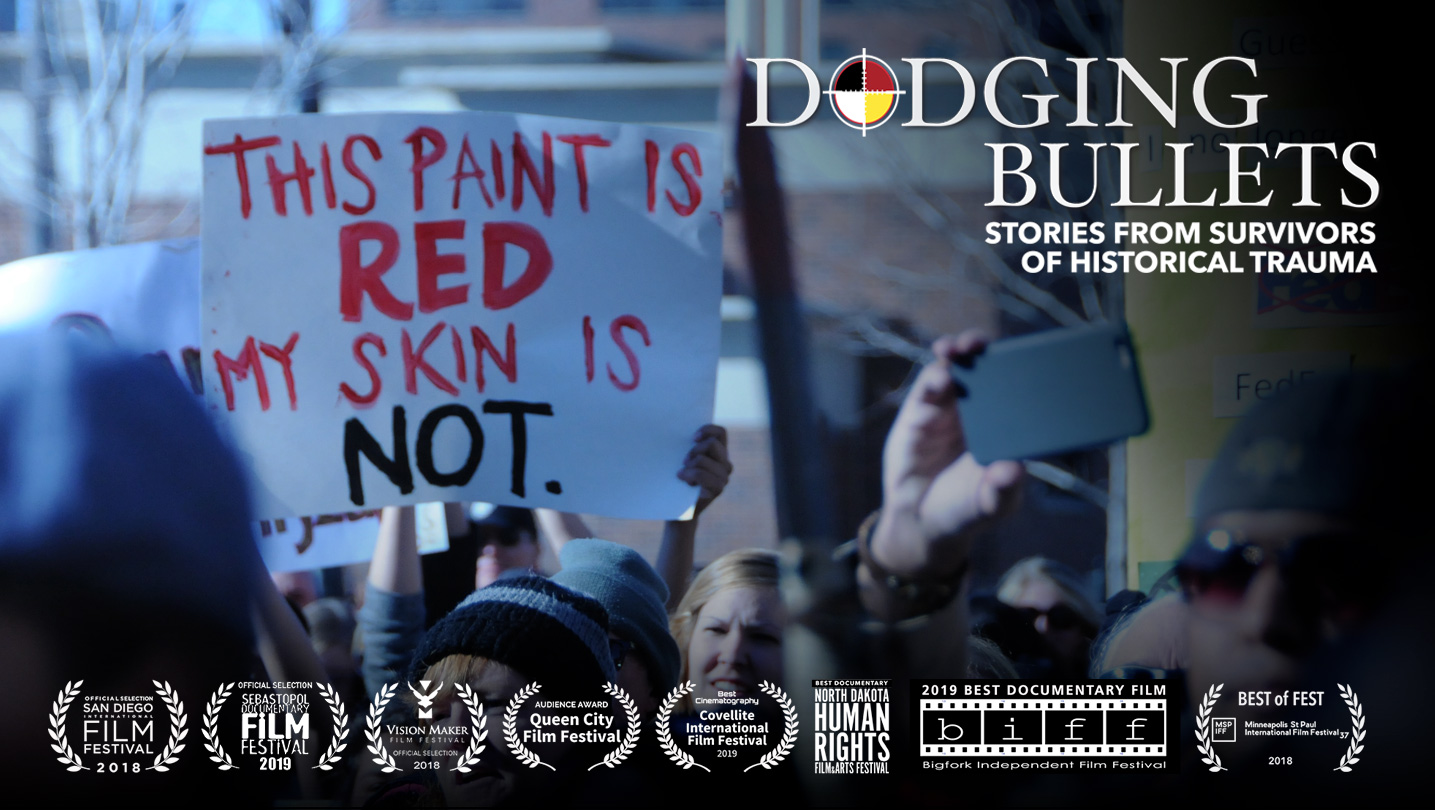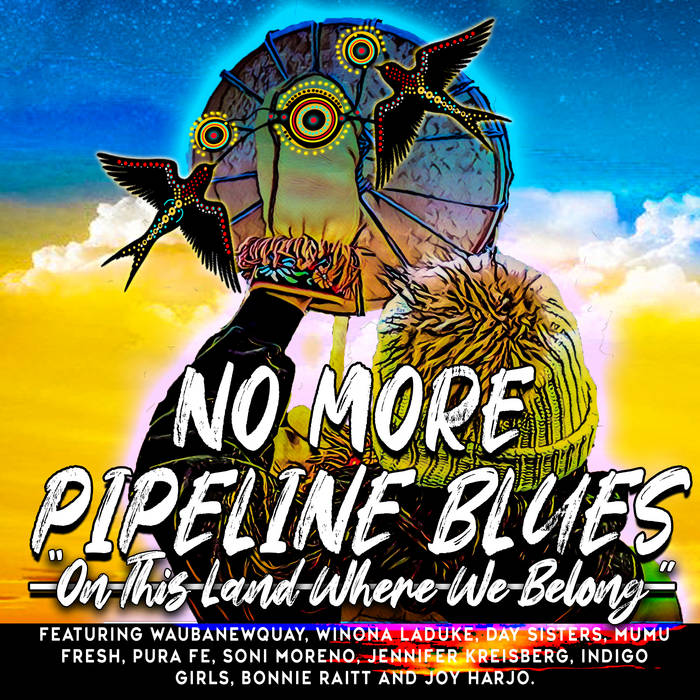Films and Videos Biography
Labor’s Turning Point – 1981 (59 min.)
Producer & Writer: John De Graaf
Music: Larry Long (Guitar, Voice), Liz Lupien (Piano), Pete Watercott (Violin)
The 1934 Minneapolistruck drivers’ strike was a pivotal struggle for working people of the midwest. As a result of new tactics developed in the successful strike, it led to the organization of over the road truckers and the growth of the Teamsters nationally into one of the most important and powerful unions in the United States. The film shows how the strike was organized and how the union broke the back of the anti-union Citizen’s Alliance and made Minneapolis a union town. It also includes the ground breaking role of the strikers’ wives in organizing for the strike and the establishment of the daily bulletin. These tactics are relevant today in the sturggle of labor to organize and survive.
Learn more>

Agent Orange: A Story of Dignity & Doubt – 1981 (28 min.)
Producer & Director: Jim Gambone
Narration: Martin Sheen
Music: Agent Orange (My Country ‘Tis of Thee) by Larry Long
Shows the struggle of Vietnam War veterans who were exposed to the poisonous herbicide, Agent Orange, during the war. Discusses the medical problems of the veterans and their families as a result of exposure, and the problems they have had in getting help, medical treatment, and recognition of the problem from the Veterans Administration and U.S. Government.
Gerald Johanneck: A Truck Driver’s Life – 1988 (9:14)
Produced by Barry Kimm & Larry Long
Gerald Johanneck, an 86 year-old truck driver from Southwest Minnesota, shares his life story with children of his community about bank robberies, stockyard strikes and the first time he was ever afraid. The video demonstrates how oral traditions create a vital link between different generations. From this interview Larry Long with youth from his hometown of Wabasso, Minnesota wrote a song in Gerald Johanneck’s honor entitled Hauling Freights, No Fences.

Be Kind To All That Live (Honoring Helen Tsuchiya) – 2012 (11:13)
Producer & Directors: David McDonald & Larry Long
Videographer: David McDonald
Music: Larry Long
Helen Tsuchiya, born 1924 in California, is a Japanese-American internment Camp Survivor. In her own words:
My name is Helen Tsuchiya. My maiden name was Tanigawa. I recently celebrated my 80th birthday. Growing up, my family included my parents and three sisters. My parents were born in Japan, but I was born in the United States. My father was a farmer, growing mostly grapes on our farm.
Many things changed for me, beginning December 7, 1941 when the Japanese bombed Pearl Harbor. The United States declared war on Japan. Some people believed that Japanese-Americans could not be trusted. Executive order 9066 was passed. This order said that Japanese-Americans must be put in internment camps. There was war hysteria.
Japanese-Americans on the West Coast were evacuated from their homes. We had only a few weeks to prepare and we could only take a few things with us. We ended up selling some of what we owned for very little money. My mother thought that the house would be protected and things would be fine when we returned. But in one day, everything had been stolen—even pictures of my parents’ wedding. It broke my mother’s heart.
In the internment camp, we lived in barracks and the land was surrounded by barbed wire. Our family lived in a 20-foot by 20-foot room for three years. It was so dusty it was difficult to breathe. Bathrooms had no privacy.
The survivors of the camp later received $20,000 as an apology from the United States government. But my parents had died before receiving the apology—they were the ones who really deserved the apology. Once a woman questioned why I had received this money. I told her, “you can have it, if you’re willing to lose three years of your life and lose all that you own.
This is so difficult to understand because everyone in my family was a United States citizen. There were even Japanese-Americans who served in the united States military but later could not eat at some U.S. restaurants because they would not serve us.
Sometimes a Pima girl would walk up to the barbed wire fence and talk to the Japanese-American children on the other side of the fence. She felt sorry for us confined in the camp, while we felt sorry for her, confined to the reservation.
After the war my family decided to move to Minnesota. In California someone else was farming our farm and living in our house. We didn’t want to go back to California. They hated us there because we were Japanese. Minnesota saved us. I didn’t run into prejudice here.
I am a Buddhist. Buddhism teaches you to be compassionate and kind to people. You must be compassionate, patient and think of others in a good way.

Dodging Bullets Stories from Survivors of Historical Trauma
Kathy Broere, Sarah Edstrom, Bobby Trench
Producers Larry Long and Bobby Trench
Composer Keith Secola
Videography Bob Trench and Mattmmmm
Sound Del Helmer
The award-winning film Dodging Bullets is a groundbreaking documentary that provides an authentic and unfiltered look at life in Indian Country. Unlike many films that sensationalize Indigenous struggles, this documentary amplifies the voices of survivors, offering a powerful perspective on historical trauma and resilience. Filmed across multiple locations in North America, With a 4.7+ rating on Amazon Prime, Dodging Bullets sheds light on stories rarely seen in mainstream media, challenging stereotypes and deepening understanding.
MSP International Film Festival Jury Statement: The documentary feature Dodging Bullets breaks new ground in form and in its subject matter. The filmmakers offer a series of largely episodic stories, intimately documented, about Native American individuals who have been impacted by ethnic genocide in the United States. These episodic narratives are joined narratively in an analysis of how each of these events has contributed to an ongoing experience of unresolved historical trauma for many in the Native American community, in which many traumatized individuals and communities epigenetically transmit unresolved trauma to future generations. Compelling in its visual and narrative approach, it is ultimately a story of resilience and hope as the filmmakers bring a nuanced perspective to a difficult topic, demonstrating the dignity of their subjects and offering the possibility of freedom from generations of inherited traumatic stress.
Live and studio Indigenous music provides an influential and authentic backdrop to the film’s narrative as well as insight from a musical storyteller’s point of view.

No More Pipeline Blues (On This Land Where We Belong) – 2021 (4:59)
Song & Audio Soundtrack Produced & Composed by Larry Long
Recorded & Mixed by Brett Huus, Sound Strations Studio
Audio Single Released on Rock The Cause Records
Film Directed by Keri Pickett
FEATURED VOCALISTS Waubanewquay, Anishinaabe Ojibwe Nation Winona LaDuke, Anishinaabe Ojibwe Nation Pura Fe, Tuscarora & Taíno Nations Soni Moreno, Mayan, Apache & Yaqui Nations Jennifer Kreisberg, Tuscarora Nation DAY SISTERS: Sharon Day, Charlene Day-Castro,Dorene Day,Julia Uleberg, Anishinaabe Ojibwe Nation Mumu Fresh, Maimouna Youssef, Creek & Choctaw Nations INDIGO GIRLS: Amy Ray & Emily Saliers Bonnie Raitt Joy Harjo, 23rd Poet Laureate of the United States, Muscogee Creek Nation.
RollingStone April 20, 2021: Bonnie Raitt and the Indigo Girls are among the many voices featured on “No More Pipeline Blues (On this Land Where We Belong),” out on Earth Day (April 22nd) via Rock the Cause Records.
The track supports the ongoing fight against Minnesota’s “Line 3” tar sands oil pipeline, which cuts through more than 200 bodies of water, including the Mississippi River. The resistance is heavily led by indigenous women, including activist Winona LaDuke — who has spent the last eight years trying to prevent the construction of Line 3.
In addition to Raitt, the Indigo Girls, and LaDuke, the song also features the first Native American poet laureate, Joy Harjo, as well as Waubanewquay, Day Sisters, Mumu Fresh, Pura Fe, Soni Moreno, and Jennifer Kreisberg. It was produced and composed by Larry Long.
The accompanying video, directed by Keri Pickett, shows indigenous peoples protesting on the front line, holding signs, and confronting the police.
Rolling Stone Magazine

FROM SEA TO SHINING SEA – Katharine Lee Bates and the Story of America The Beautiful – 2025 (37 min)
Writer/Director: John de Graaf
Producers: Laura Pacheco, Laurence Cotton and Karen Olcott
Music: Whitney Houston, Ray Charles, Elvis Presley, Blane Howard, Judy Collins, Closing Credits features Larry Long & Claudia Schmidt performing his song American Hymn inspired from America the Beautiful.
Examines the remarkable life of Katharine Lee Bates, poet, professor, and social reformer; an unsung hero best known for authoring America the Beautiful who was deeply committed to the beauty and principles of our country.
America The Beautiful may be America’s most beloved song. Its words are found in nearly every hymn book in the country. It’s much easier to sing than The Star-Spangled Banner, much more welcoming, much less militaristic. There have been numerous proposals to make it our national anthem, most notably by music legend Ray Charles. It celebrates our natural beauty and makes a powerful appeal for justice, brotherhood and inclusion. It has been sung at inaugurations, demonstrations, and sporting events like the Indianapolis 500 and others, in operatic, folk, country and other styles.
FROM SEA TO SHINING SEA: KATHARINE LEE BATES AND THE STORY OF AMERICA THE BEAUTIFUL
